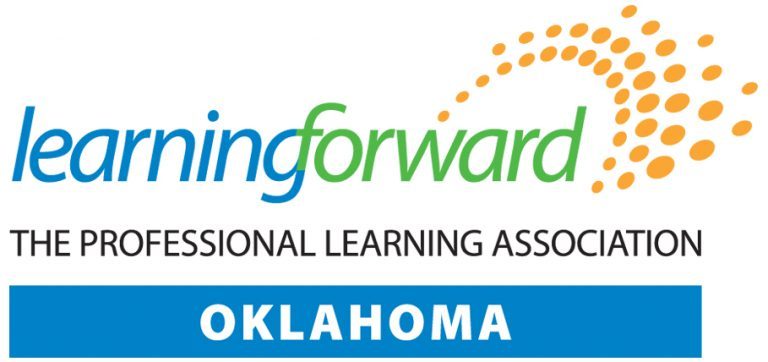Building Trust and Efficacy through Critical Friends Groups: Insights for School and Teacher Leaders
By Katy Ackley, Ed.D., Executive Director of Educator Effectiveness and Professional Learning, Tulsa Public Schools
Two ongoing challenges that schools face, particularly urban schools, are finding ways to develop and retain quality teachers and contribute to student academic success. There are claims that collaborative structures for teacher development (think, Professional Learning Communities) can nurture teacher learning and job satisfaction, which one could argue has the potential to lead to better teacher retention. Research also shows both faculty trust in colleagues and perceived teacher collective efficacy to be highly correlated with student achievement.
Knowing that trust and efficacy matter, how then, can we begin to develop and nurture it in our schools? My hypothesis – through a particular form of collaborative learning community called Critical Friends Groups, referred to herein as CFGs. This question and proposition served as the foundation for my recent research on the relationships between CFGs and faculty trust and collective efficacy.
Before we begin to explore any findings, let’s clarify what we mean when we talk about trust, collective efficacy, and CFGs. Faculty trust in colleagues is defined as the faculty’s belief that teachers can depend on each other in difficult situations, and that teachers can rely on the integrity of their colleagues. Further, faculty trust is defined as a collective form of trust in which the faculty has an expectancy that the word, promise, and actions of another group of individuals can be relied upon and that the trusted party will act in the best interest of the faculty. Collective teacher efficacy refers to the shared perceptions of teachers in a school that the efforts of the faculty as a whole will have a positive effect on students. Collective efficacy represents the shared views of group members regarding the performance capabilities of the group as a whole. It’s these two factors we seek to build through CFGs.
A CFG is a specific form of professional learning community that utilizes intentional structures and processes, called protocols, and skilled facilitation to guide teacher collaboration. CFGs developed out of the work of the Annenberg Institute for School Reform at Brown University. First launched in 1995, a CFG is typically a group of 8-12 educators who who meet regularly to discuss issues of practice and student learning. Through the use of various protocols published by School Reform Initiative, educators in a CFG investigate teaching, learning and assessment, examine data, explore professional dilemmas, learn from texts, emphasize equity and excellence, extend practice, and observe one another.
To better understand the relationship between CFGs and trust and efficacy, I examined data from a culture and climate survey teachers in our district take annually. This survey includes measures designed to understand teachers’ perceived effectiveness of the CFG in which they participate (in many cases this would be a grade level or subject area team, or in some cases a mixed group of teachers working together cross-functionally) as well as their levels of trust in their colleagues and senses of collective efficacy. Without boring you with much of the research related details, what I found through my analysis is there is in fact a strong positive correlation between teachers’ perceived effectiveness of their CFG and both faculty trust and collective efficacy. In short, the better teachers feel about their experience in their CFG group, the more they trust their colleagues and believe in the effectiveness of the group as a collective. It’s worth mentioning as well that perceived CFG effectiveness was also associated with higher levels of academic emphasis, trust in students and principals, perceptions of the professional climate and instructional environment, as well as a higher perception of the behaviors of their school leader.
So what does this mean for schools? The bottom line is, research supports the importance of trust and efficacy for quality teaching and learning. CFGs have promising potential as a strategy for developing both. Schools and teachers seeking to develop more supportive and nurturing professional climates can consider CFGs as a potential practice for improving collaborative experiences for staff.
There are some considerations to bear in mind, however, for those contemplating the implementation of CFGs. They don’t magically materialize. Leaders must commit time to the work, both on the front end for training of teachers, and on an ongoing basis to ensure adequate time is dedicated to and protected for the works of CFG groups to occur. In addition to sustaining a commitment to the work of CFGs leaders need to exercise patience, and “stay the course” when implementing. As is the case with school reform efforts, the complex work of high functioning CFGs and the healthy school climates they support take time to authentically develop. Leaders must resist the temptation to abandon CFG work in favor of “the next big thing” at the first sign of trouble. Teachers will not become experts at facilitating or participating in the work of CFGs overnight, nor will the intended outcomes of faculty trust and collective efficacy develop overnight.
Given time, however, CFGs and the members in them will develop to include intentional and professional discourse, and deeper levels of dialogue and learning about teaching practices, student work, teachers tasks and professional dilemmas. It is these ongoing conversations that will foster the development of a school culture in which faculty trust in colleagues and teacher collective efficacy are present and thriving. By developing these two variable and others that support a healthy school climate, CFGs have the potential for great influence on school success when it comes to effective teaching practices and positive learning experiences for students.
Visit the School Reform Initiative website to learn more about the work of Critical Friends Groups and to access protocols, resources and opportunities for professional development.
References
Tschannen-Moran, M., & Hoy, W. (1997). Trust in schools: A conceptual and Empirical analysis. Journal of Educational Administration, 36(4), 334-352.
Forsyth, P. B., Adams, C. M., & Hoy, W. K. (2011). Collective trust: Why schools can’t improve without it. New York: Teachers College Press.
Goddard, R. D., Hoy, W. K., & Hoy, A. W. (2000). Collective teacher efficacy: Its meaning, measure, and impact on student achievement. American Educational Research Journal, 37(2), 479-507.
Moore, J., & Carter-Hicks, J. (2014) Let’s talk! Facilitating a faculty learning community using a critical friends group approach. International Journal for the Scholarship of Teaching and Learning, 8(2), 1-17.
Quate, S. (2004). Critical friends groups. In powerful designs for professional learning (pp. 95-102). Dallas: National Staff Development Council.

Our Vision
Excellent teaching and learning every day.
Our Mission
Learning Forward builds the capacity of its members, clients, partners, and staff to establish and sustain effective professional learning.

